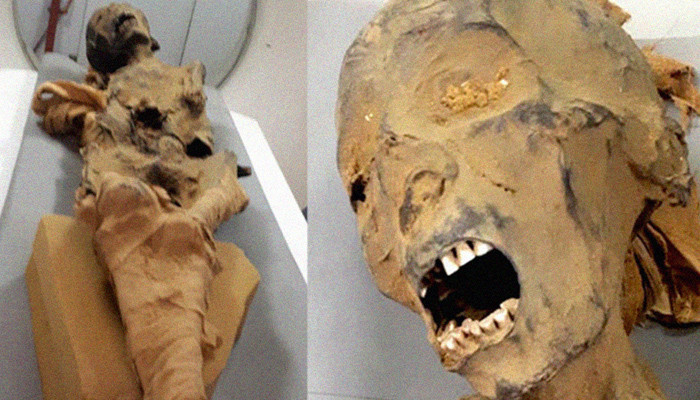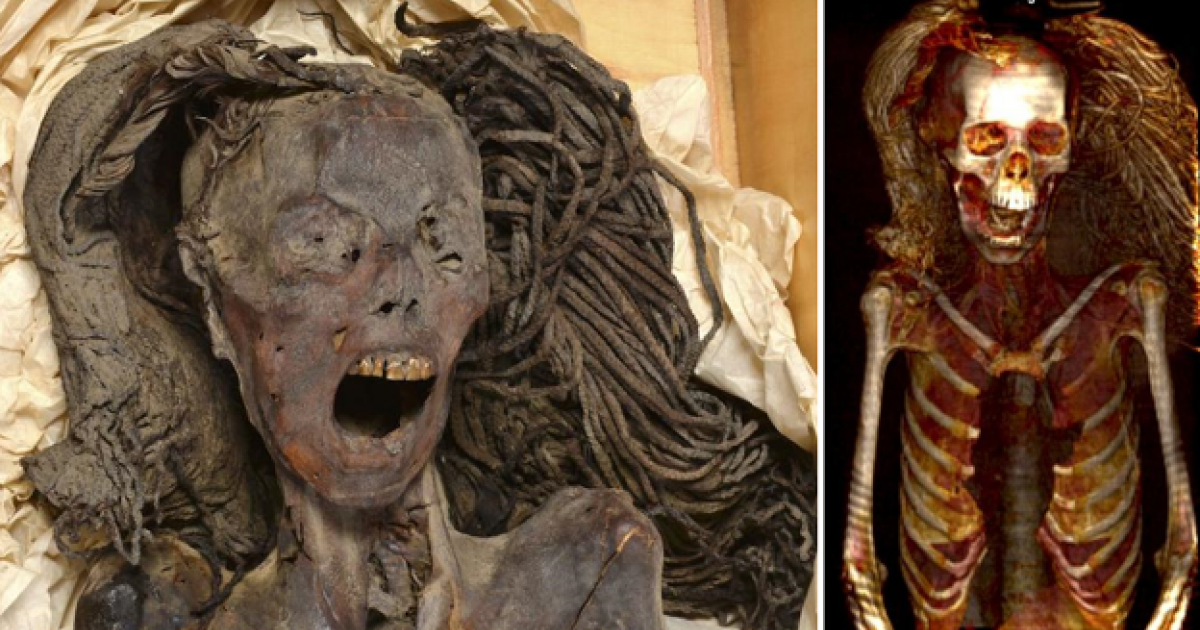A recent analysis of the 3,500-year-old mummy known as the “Screaming Woman” could revolutionize our understanding of ancient Egyptian mummification practices and solve a long-standing mystery that has perplexed Egyptologists.
Discovered during excavations at Deir el-Bahari in 1935, this mummy, with her mouth frozen in a scream, has raised questions about the burial techniques of the time.
Advanced imaging and modern research have provided new insights that challenge traditional beliefs about what constitutes good versus poor mummification, offering a fresh perspective on ancient Egyptian rituals.
Discovery and Initial Investigations
During the 21st and 22nd Egyptian dynasties, priests relocated many dynastic remains to the Deir el-Bahari Royal Cache in Thebes, near modern-day Luxor. Initial excavations began in 1881, but it wasn’t until a follow-up investigation by the Metropolitan Museum of New York in 1935 that significant finds emerged.
Archeologists uncovered the tomb of Senmut, the royal architect and rumored lover of Queen Hatshepsut. Beneath Senmut’s resting place lay another chamber containing his mother, Hat-Nufer, and multiple unidentified relatives.
Among them was the “Screaming Woman.”
The Screaming Woman’s Distinctive Features

The mummy of the “Screaming Woman” was discovered in a wooden coffin, adorned richly but with a mouth frozen open in what appeared to be a scream.
Although not unique, her expression raised questions because such an open mouth is usually seen as a sign of poor mummification. However, given her royal interment, this didn’t add up.
New Insights from Modern Technology
Radiology professor Sahar Saleem and her team at Cairo University’s Kasr Al Ainy Hospital published a study in the journal Frontiers in Medicine offering new insights.
Using advanced technology like CT imaging, infrared spectroscopy, and scanning electron microscopy, they proposed that the open mouth might result from a cadaveric spasm rather than poor mummification.
Health and Preservation Details
CT scans revealed the woman, approximately 48 years old at her death, had lost multiple teeth during her life due to bone resorption.
Evidence suggested these teeth may have been professionally extracted, highlighting the advanced dental practices of ancient Egypt. Additionally, bone spurs on her vertebrae indicated mild spine arthritis.
Unusual Mummification Techniques
One of the most surprising findings was the lack of an embalming incision. Typically, New Kingdom mummification involved removing all organs except the heart. However, the “Screaming Woman” retained her organs, suggesting that leaving organs intact might have been customary at times.
Fourier Transform Infrared Spectroscopy (FTIR) scans of her skin revealed the presence of juniper and frankincense, imported luxuries. Her natural hair was dyed with henna and juniper, and she wore a wig made from date palm fibers treated with albite crystals, magnetite, and quartz to appear more youthful.
Implications of the Findings
Saleem’s findings challenge the traditional belief that failing to remove internal organs indicated poor mummification. The combination of well-preserved appearance and luxurious embalming materials supports the notion of trade in embalming materials in ancient Egypt.
This method, combined with the woman’s well-preserved state, contradicts the idea that leaving organs inside the body signified poor mummification.
While the exact cause of the “Screaming Woman’s” death remains unknown, the research led by Sahar Saleem provides new insights into ancient Egyptian burial practices.
These findings suggest that practices like organ removal were not always a defining feature of professional mummification. The “Screaming Woman” serves as a time capsule, offering a glimpse into her life and the mummification practices of her time.
Her preserved state, and the luxurious materials used highlights the sophisticated and varied techniques of ancient Egyptian embalmers. This discovery not only revises our understanding of what constitutes good mummification but also underscores the complexity of ancient Egyptian burial traditions.





